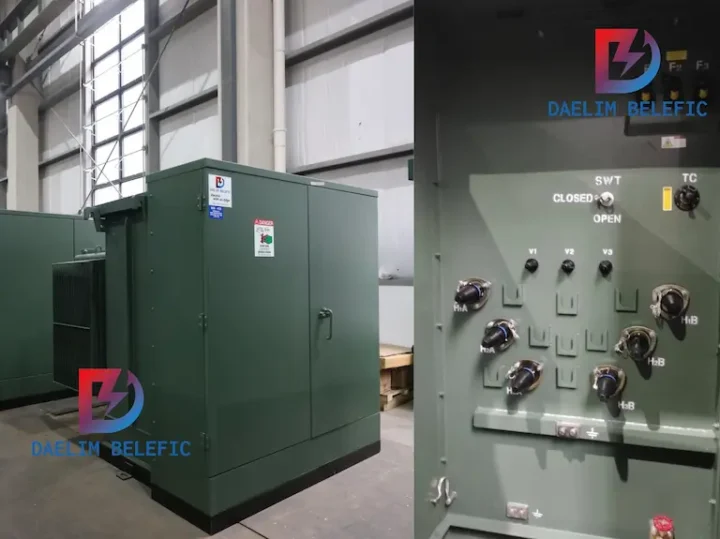ELECTRIC, WITH AN EDGE

The primary function of the pad mounted transformer is to serve as a critical distribution transformer that steps down higher primary voltage from utility distribution lines to lower secondary voltage suitable for end-user consumption. This essential electrical device, securely housed in a locked metal cabinet and mounted on a concrete pad, plays a vital role in residential and commercial power distribution systems by safely and efficiently delivering transformed electrical power to homes and businesses through underground utility lines.
The pad mounted transformer’s core functionality revolves around voltage transformation and safe power distribution. When electrical power travels through utility distribution lines, it does so at high voltage levels that aren’t suitable for direct consumer use. The transformer’s primary responsibility is to receive this high-voltage power and convert it to usable voltage levels through electromagnetic induction within its core/coil assembly, which is typically immersed in oil for cooling and insulation purposes.
To execute its primary function effectively, pad mounted transformers incorporate several crucial design elements. The equipment consists of a sealed tank housing the transformer’s core/coil assembly, alongside separate high and low voltage wiring compartments. This compartmentalized design ensures safe power transformation while maintaining accessibility for utility maintenance. The transformers are manufactured with power ratings typically ranging from 75 to 5000 kVA, allowing them to serve various load requirements from single large buildings to multiple residential units.
While performing its voltage transformation function, pad mounted transformers prioritize safety through their design. The metal cabinet enclosure ensures all live electrical components are safely contained within a grounded metal box, eliminating the need for additional fencing unlike substation transformers. This safety-first design approach enables these transformers to be installed in residential areas while maintaining easy access for authorized maintenance personnel through lockable doors that swing open to expose the wiring compartments.
In executing its primary function, the pad mounted transformer serves as a crucial connection point between utility distribution networks and end-users. The transformer connects to underground utility lines at the service drop point, effectively bridging the gap between the utility’s distribution system and consumer power needs. This integration allows for efficient power distribution while maintaining the aesthetic appeal of residential areas by eliminating overhead power lines.
The versatility of pad mounted transformers in performing their primary function is evident in their ability to handle various load requirements. One transformer can serve either a single large commercial building or multiple residential units, depending on its power rating and the local power distribution needs. This flexibility in load management makes them indispensable in modern power distribution systems, particularly in residential subdivisions and commercial areas where reliable power transformation is essential.
To ensure optimal performance of its primary function, pad mounted transformers often include built-in fuses and switches for protection and control. The installation process follows specific guidelines regarding placement near building structures, considering safety recommendations from insurance industry practices. This careful attention to installation requirements ensures the transformer can perform its voltage transformation function while maintaining safety standards and accessibility for maintenance.
Related Article:
After filling in the contact information, you can download the PDF.